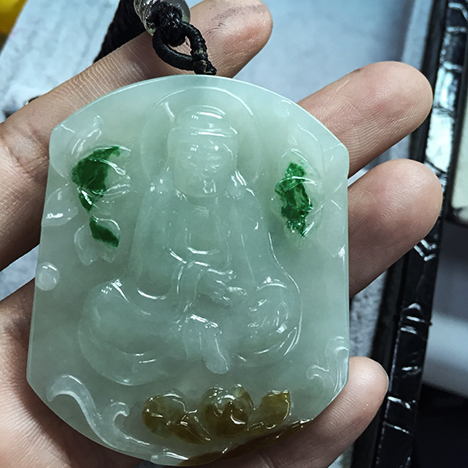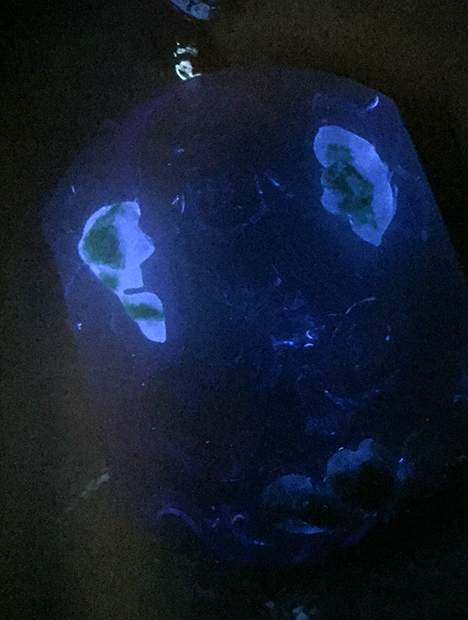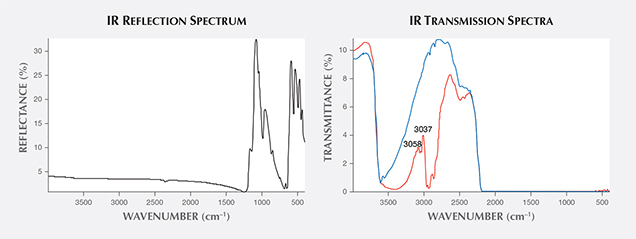“Decorated” Jadeite Jade in the Chinese Market

Figure 1 shows three jadeite pendants decorated with small green and brown jadeite plates. These pendants were submitted to the Gem Testing Center of China University of Geosciences (Wuhan) for identification of species and treatment. They were tested by observation under microscope and ultraviolet lamp, infrared (IR) spectroscopy, and ultraviolet/visible (UV-Vis) absorption spectroscopy.
The background color and texture quality of the small plate attachments was similar to those of the main jadeite body, creating a harmonious overall appearance (again, see figure 1). The green color appeared to be floating on the surface and seemed to be detached from the base (figure 2, left), whereas the natural color zone of jadeite always changes gradually. Resin with accompanying bubbles was found in the space between the green attachments and the jadeite body (figure 2, right). Under the long-wave UV lamp, the resin in the contact region emitted strong blue-white fluorescence while the body did not fluoresce (figure 3).

Figure 2. Left: The green color on this jadeite appears to float on the surface and has a clear boundary. Field of view 5.50 mm. Right: Resin with bubbles fills the space in the contact area. Field of view 16.8 mm. Photomicrographs by Shufang Nie.

Figure 3. The resin in the contact region emits strong blue-white fluorescence under a
long-wave ultraviolet lamp. Photo by Fen Liu.
The IR reflection spectra of the green attachments showed typical jadeite features (figure 4, left). However, the IR transmission spectrum of the contact zone revealed peaks at 3058 and 3037 cm–1, indicating the stretching vibration of the benzene ring in resin (figure 4, right), which was used to attach the decoration. The blue trace in figure 4 is typical for jadeite without any treatment.

Figure 4. Left: The IR reflection spectrum of the jadeite decorations matches the typical spectrum for jadeite. Right: IR transmission spectra of the jadeite body (blue trace) and the green attachment zone (red trace). The blue trace is typical for natural jadeite without filling, while the 3058 and 3037 cm–1 peaks on the red trace are characteristic for resin, which was used to attach the colored jadeite plates.
The attachments all had a typical fibrous-granulous crystalloblastic texture without loosening or slagging. This implied they were natural jadeite that had not been subjected to acid washing or filling. The green color of the attachments was also natural, as shown by the UV-Vis absorption spectrum, which showed the 690 and 660 nm peaks induced by Cr3+.



